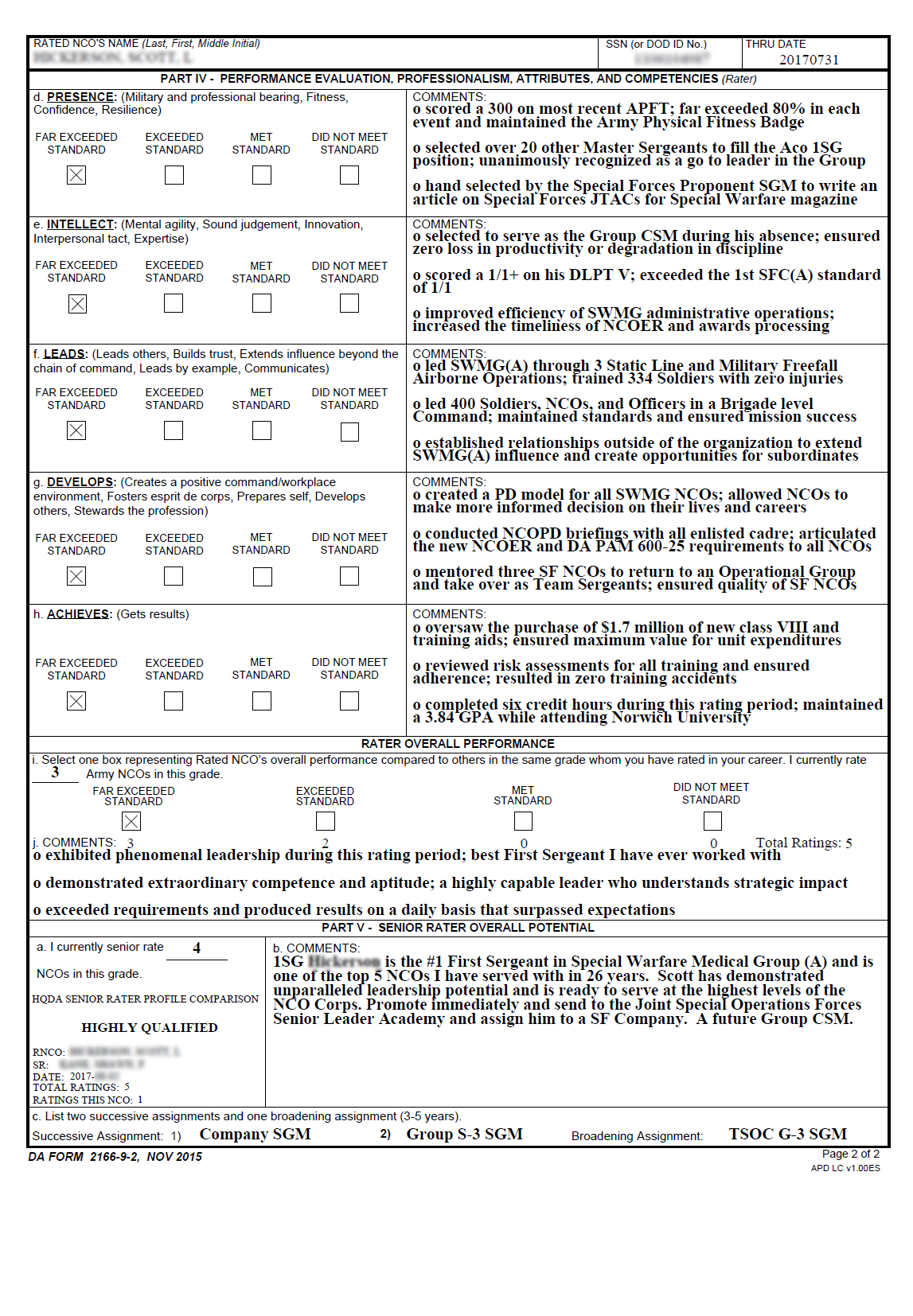Ncoer Regulation : What it is
NCOER Regulation: Understanding its Importance and Guidelines The Noncommissioned Officer Evaluation Report (NCOER) is a vital document within the United States Army, serving as the primary method of assessing the performance and potential of noncommissioned officers (NCOs). The NCOER provides crucial feedback to NCOs, allowing them to understand their strengths, weaknesses, and areas for improvement. In this article, we will delve deeper into the NCOER regulation, its significance, and the guidelines for its proper implementation. 1. What is the NCOER? The NCOER is a comprehensive assessment tool designed to evaluate the performance, character, and potential of NCOs. It guides the development of NCOs by providing feedback on areas such as leadership abilities, training proficiency, and professional growth. By maintaining a standardized approach, the NCOER regulation ensures fairness and consistency in assessing the NCO Corps. 2. Understanding the NCOER Regulation: The NCOER regulation is governed by a set of guidelines outlined in Army Regulation 623-3. This regulation establishes the policies and procedures for conducting NCO evaluations, ensuring that evaluations are objective, fair, and meaningful. Key aspects addressed within the regulation include the rating system, evaluation types, and assessment criteria. a. Rating System: The NCOER rating system consists of five rating levels: Far Exceeds Standards (MA), Exceeds Standards (A), Meets Standards (B), Needs Improvement (C), and Fails to Meet Standards (D). Each rating reflects the NCO's performance in various leadership categories, such as character, presence, intellect, and more. b. Evaluation Types: The NCOER regulation defines two types of evaluations: mandatory and optional. Mandatory evaluations are conducted for NCOs with a rank of sergeant and above, while optional evaluations can be conducted for specialists and corporals. The frequency and timing of these evaluations are outlined in the regulation. c. Assessment Criteria: According to the NCOER regulation, NCOs are evaluated based on specific performance standards related to their duty position. These standards are tailored to encompass important aspects such as leadership attributes, technical skills, training proficiency, and Army values. Adherence to these criteria ensures a comprehensive and accurate evaluation. 3. Guidelines for Effective NCOER Execution: To ensure the effective execution of NCOER evaluations, the following guidelines must be followed: a. Clear Communication: When conducting an NCOER, clear communication between the rater and the rated NCO is crucial. Raters should provide detailed explanations for the assigned ratings and feedback on the NCO's performance. It is essential to use specific examples and metrics to support the evaluation. b. Objective Evaluation: NCOER evaluations should be based solely on the performance and potential of the rated NCO. Evaluators should avoid personal biases, stereotypes, or any other subjective influences that may compromise the fairness of the report. c. Ongoing Feedback: NCOERs should not be the only source of feedback for NCOs. Regular counseling sessions should be conducted throughout the rating period to provide continuous guidance and support. This ensures that NCOs are aware of their progress and have opportunities for growth. 4. FAQ Section: Q1: Can an NCO appeal an NCOER? A1: Yes, NCOs have the right to appeal an NCOER. The appeal process allows NCOs to challenge the evaluation if they believe the report is unfair or inaccurate. The appeals should follow the guidelines outlined in Army Regulation 623-3. Q2: What happens if an NCO receives a "Fails to Meet Standards" rating? A2: For NCOs who receive a "Fails to Meet Standards" rating, the consequences can vary depending on the circumstances. It may result in adverse administrative actions, including denial of reenlistment, non-promotion, or even separation from the Army. Q3: How often should an NCOER be conducted? A3: Mandatory NCOERs should be conducted annually. However, interim NCOERs can also be performed if there has been a significant change in the NCO's performance or assignment. By adhering to the NCOER regulation and implementing effective evaluation practices, the U.S. Army ensures the development and success of its NCO Corps. The NCOER serves as an indispensable tool for assessing NCOs' abilities, enabling them to perform their duties with excellence and contribute to the overall mission accomplishment of the Army.  Image Source : armymilitary.net
Image Source : armymilitary.net  Image Source : civildefence.info
Image Source : civildefence.info  Image Source : armymilitary.net
Image Source : armymilitary.net  Image Source : armymilitary.net
Image Source : armymilitary.net  Image Source : www.notsimply.za.com
Image Source : www.notsimply.za.com  Image Source : www.armycounselingonline.com
Image Source : www.armycounselingonline.com  Image Source : civildefence.info
Image Source : civildefence.info  Image Source : fybazomonij.net63.net
Image Source : fybazomonij.net63.net
Army Ncoer Support Form Examples - Army Military
 Image Source : armymilitary.net
Image Source : armymilitary.net Awasome Leadership Styles Army 2022
 Image Source : civildefence.info
Image Source : civildefence.info Army Regulation On Ncoer - Army Military
 Image Source : armymilitary.net
Image Source : armymilitary.net Army Ncoer Regulation - Army Military
Nco Bullets For Performance Objectives | Notsimply
 Image Source : www.notsimply.za.com
Image Source : www.notsimply.za.com Rater Quick - Army Counseling Online
rater quick
Famous Army Ncoer Regulation 2022
 Image Source : civildefence.info
Image Source : civildefence.info Army Regulation For Ncoers
 Image Source : fybazomonij.net63.net
Image Source : fybazomonij.net63.net army regulation mcmahon only search
Rater quick. Army ncoer regulation. Rater quick. Army regulation on ncoer. Nco bullets for performance objectives